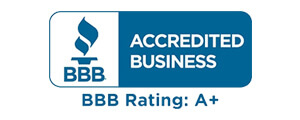You can considerably reduce your impact on the environment by using clean, renewable sources of energy. Solar energy is simple, smart, and sustainable. It is good for our planet and helps you reduce your energy bills and generate electricity for the grid. Moreover, the United States federal government subsidizes the purchase and installation of solar power generating systems with a federal solar tax credit. The credit is available for both residential and commercial installations. Let us dive into the working of solar tax credit for homeowners.
What is the federal solar tax credit?
A tax credit is a dollar-for-dollar reduction in the amount of income tax otherwise payable by you. Solar tax credit is a tax credit that can be claimed on federal income taxes for a percentage of the cost of a solar photovoltaic (PV) system installed.
What are the eligibility requirements to claim solar tax credit?
As a residential solar energy user, you are eligible for the solar investment tax credit if you meet these criteria:
- Your solar PV system was installed entirely between January 1, 2006, and December 31, 2021.
- It is in a residential location in the US, either in your primary or secondary residence.
- The solar PV system is new or being used for the first time.
- You have purchased it with cash or through financing. You are neither leasing a solar solution nor are purchasing electricity generated by a system you do not own.
- You can claim tax credit even if you are not connected to the grid but as long as the solar installation is generating electricity for your use.
What are the expenses that are covered?
The following expenses can be considered in the cost of the solar system installed:
- Cost of solar panels.
- Price of PV cells to power the attic fan.
- Labor costs incurred by the solar contractor on onsite inspection, assembly, and installation.
- Other permitted fees and sales tax expenses.
- Balance-of-system equipment such as wiring, inverters, and mounting equipment.
- Energy storage devices that are charged by the solar system installed.
What is the extent of tax credit that I can claim?
Installations between the years 2016 – 2019 were eligible for a tax credit of 30% of the cost of the system. It means the dollar value equivalent to 30% of the cost could be reduced from the total federal tax payable by a homeowner who had gone solar in those years. The incentive is reducing on a continuous basis:
| Year of Installation | Solar Tax Credit |
|---|---|
| 2020 | 26% |
| 2021 | 26% |
| 2022 | 26% |
| 2023 | 22% |
For now, installations after 2023 are not eligible for any tax credit.
Are there conditions where I cannot claim solar tax credit?
You cannot claim the credit if you do not owe any federal tax. But if you do not have enough tax liability to claim the entire credit in one year, you can take it forward to the following years till the credit is exhausted.
For more details and comprehensive information on the solar tax credit, you can visit the IRS website.
Go Green with GreenBrilliance
The US government is working to evolve to a renewable energy economy, and you can play a part by switching to solar. GreenBrilliance can provide an integrated solar solution that best fits your requirements. We partner with you to help you achieve energy independence, monetary benefits and contribute to a sustainable future. Contact us today to make a difference.























